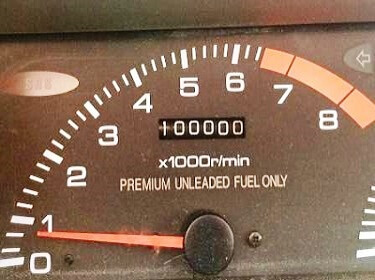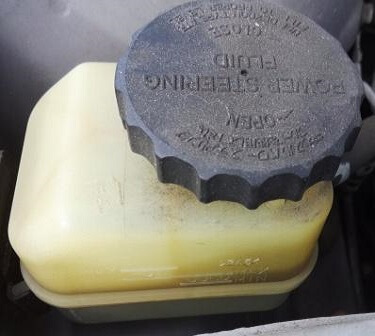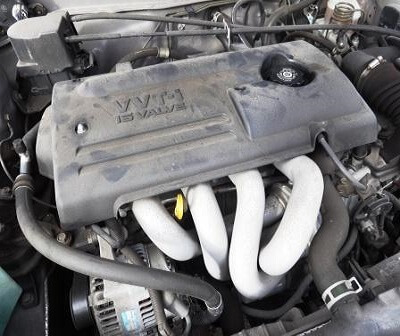5 Maintenance Items Your Car Needs at 100k Miles
Let's talk about five maintenance items your car needs at 100k miles. Although this varies between year, make and model, we'll touch on five things worth replacing if they're still original equipment when an old ride reaches 100,000 miles.
This article becomes even more important for those that buy an automobile with an unknown maintenance history.
When people are looking for affordable transportation the cars they have to choose from, often fall in the 10 year old category.
Vehicles from this age bracket often come with extended life fluids and maintenance items designed for scheduled replacement at this point in the automobiles life cycle.
However, in some cases you might find a seller decided to bail out of the car before performing these needed services.
If your goal is to get another 10 years, 100,000 miles behind the wheel of this ride, take a look at these items. Then compare them to service intervals in the vehicle specific factory issued owner’s manual.
Sidebar: Test your auto repair and maintenance knowledge with this quick 5 question car repair quiz. Not only is it fun, but you might learn something at the same time.
 Odometer Showing 100k Miles
Odometer Showing 100k MilesExtended Life Automotive Fluids
Auto mechanics and car manufacturers use the term extended life automotive fluids in comparison to how long they lasted 20 or 30 years ago.
Back in the days of green engine coolant this radiator fluid needed draining and refilling with fresh antifreeze every three years or 35,000 miles.
Failure to do so would allow the coolant to turn acidic and slowly damage the insides of the radiator, engine cooling passages and the heater core. If you let this fluid go long enough, it would eventually eat away at the metal parts and start to leak.
They designed extended life antifreeze like dex-cool to last much longer. In fact, if we take a 1997 Chevrolet Cavalier as an example, the original antifreeze installed from the factory lasted 10 years 100,000 miles.
This is pretty impressive unless you just bought the car and it still has the original engine coolant. A car still circulating this old antifreeze will experience accelerated failure of cooling system components.
You might find yourself replacing the water pump, radiator and heater core as a result. If you're not sure how old this important fluid is in the automobile you just purchased, you should probably play it safe and perform a drain, flush and refill on the cooling system.
When to Change Old Hydraulic Oil
We find hydraulic oil in several places throughout the automobile. The big three include brake fluid, power steering fluid and transmission oil. First let's talk about transmission fluid a little bit.
I put this in a different category, because servicing this red colored hydraulic oil is a different animal.
If your automobile has 100,000 miles on it, with the original transmission fluid, my personal recommendation is to leave it alone.
If the previous owners serviced it as per manufacturer's guidelines, then I would continue those service intervals.
 Power Steering Fluid Reservoir
Power Steering Fluid ReservoirThe main reason for my recommendation is I’ve seen transmissions fail after draining the original or very old fluid with excessive miles on it.
The fresh fluid contains strong detergents that might start to eat away at the weekend internal seals and cause pressure related problems.
As an example, transmission slipping, delayed engagement or flare-up between gear changes can result. Consult your owner's manual for the factory recommendation about servicing the transmission and compared this to the vehicle's maintenance history.
Next we'll move onto the brake fluid. I own an old Infiniti. My owner’s manual is very old-school about service intervals for the Dot 3 hydraulic oil installed on the assembly line. In fact, they recommend a complete change every three years regardless of mileage.
This seems a little overkill and I only service it when I see a color change in the reservoir. Brake fluid should be clear and honey colored.
If it begins to darken it's a sign of moisture intrusion or oil that's become acidic and is starting to eat away at the internal rubber seals.
The dark fluid might also come from extreme brake temperatures on abused automobiles. I have one final note about brake fluid changes.
Some automobiles from the late 90s and early 2000 use synthetic brake fluid or DOT 5 grade. Just like with synthetic engine oil, these fluids last longer.
With that said, whatever the factory recommends is what you should remove and then reinstall. As for the power steering fluid it's not usually a recommendation I put forward to my customers.
However, on automobiles that are 10 to 15 years old you should at least check the color of the power steering fluid. Modern rack and pinion steering systems have internal seals that can degrade and darken the hydraulic steering oil.
You can loosen the pressure line at the bottom of the reservoir and drain the fluid. You can also suck it out with a turkey baster.
In a nutshell, if you bought a vehicle with 100,000 miles put these maintenance items on your checklist. If you’re shopping for a ride, put these items on the used car inspection worksheet.
Replacing the Engine Spark Plugs at 100,000 Miles
 Toyota VVT-i 16 Valve 4 Cylinder Engine
Toyota VVT-i 16 Valve 4 Cylinder EngineThis is another item I would like to compare to the old days. Just 20 years ago spark plugs in all cars carried a maintenance interval of 3 years or 35,000 miles.
This was because of the soft metal the electrode used to generate the spark. By the time we got to 1995 car manufacturers started using harder metals on the electrode tip.
General Motors started installing platinum spark plugs on all models by the 1996 model year. These spark plugs came with a recommendation of 60,000 miles before replacement.
You might have to replace the ignition module before the plugs? On the v6 GM engines you could need an ignition coil as well.
By the time we pushed into the 2000 model year, car manufacturers started using iridium spark plugs in many automobiles. These plugs could go 100,000 miles between replacements.
A good example of 100,000 mile spark plugs is the 2002 Toyota Corolla with the 1.8 L VVT (Variable Valve Timing) engine.
I've seen these engines go even further before they started having car computer and sensor problems resulting from setting misfire codes due to worn out spark plugs.
In the early 2000's the Ford Motor Company found themselves doubling down on the platinum spark plugs instead of switching to iridium like some of the foreign car manufacturers.
We called these spark plugs double platinum or even triple platinum. They can also go up to 100,000 miles before needing replacement.
In the end, if you just bought a used car with 100,000 miles you need to find out if the spark plugs were ever replaced. In many cases the vehicle manufacturers will put a spot of paint somewhere on the spark plug.
They did this to notify dealership level technicians these were installed on the assembly line. This gives the technicians a point of reference about the age without having to pull them out.
If you don't see a spot of paint on the plugs they might have been replaced, but you can take one further step to get an idea of how worn out they are. Remove a plug and check the gap between the ground straps and the electrode.
Compare this measurement to the specification. If it’s close then you’re probably okay. If there’s a much larger gap over the factory specification then go ahead and replace all the spark plugs.
Final Thoughts about High Mileage Maintenance Items
We decided to leave rubber parts out of this list of five maintenance items your car needs at 100k miles. The reason is the quality of rubber components installed from the factory varies between years, make and model automobiles.
With that said, this is no reason to assume that all these components are good on the old car you bought. If your car has 100,000 miles and is 10 years old there's no way it should have the original serpentine drive belt. It shouldn't have the original engine timing belt either if equipped with one.
Other rubber items like upper and lower radiator hoses and heater hoses will also need inspection on an individual basis. One thing to consider when we talk about coolant hoses is the health of the fluid that flows through it.
If the engine coolant was maintained as per manufacturer's guidelines the hoses will last longer. If the antifreeze was ignored by the previous owner then put these hoses on your replacement to do list.
Author bio : Mark is a retired ASE certified master technician, Chevrolet Professional Service Council member and the founder of FixMyOldRide.com. Watch the video on the about Mark the mechanic page to see his credentials. Mark hand writes all of the articles on FixMyOldRide.com unless indicated otherwise.